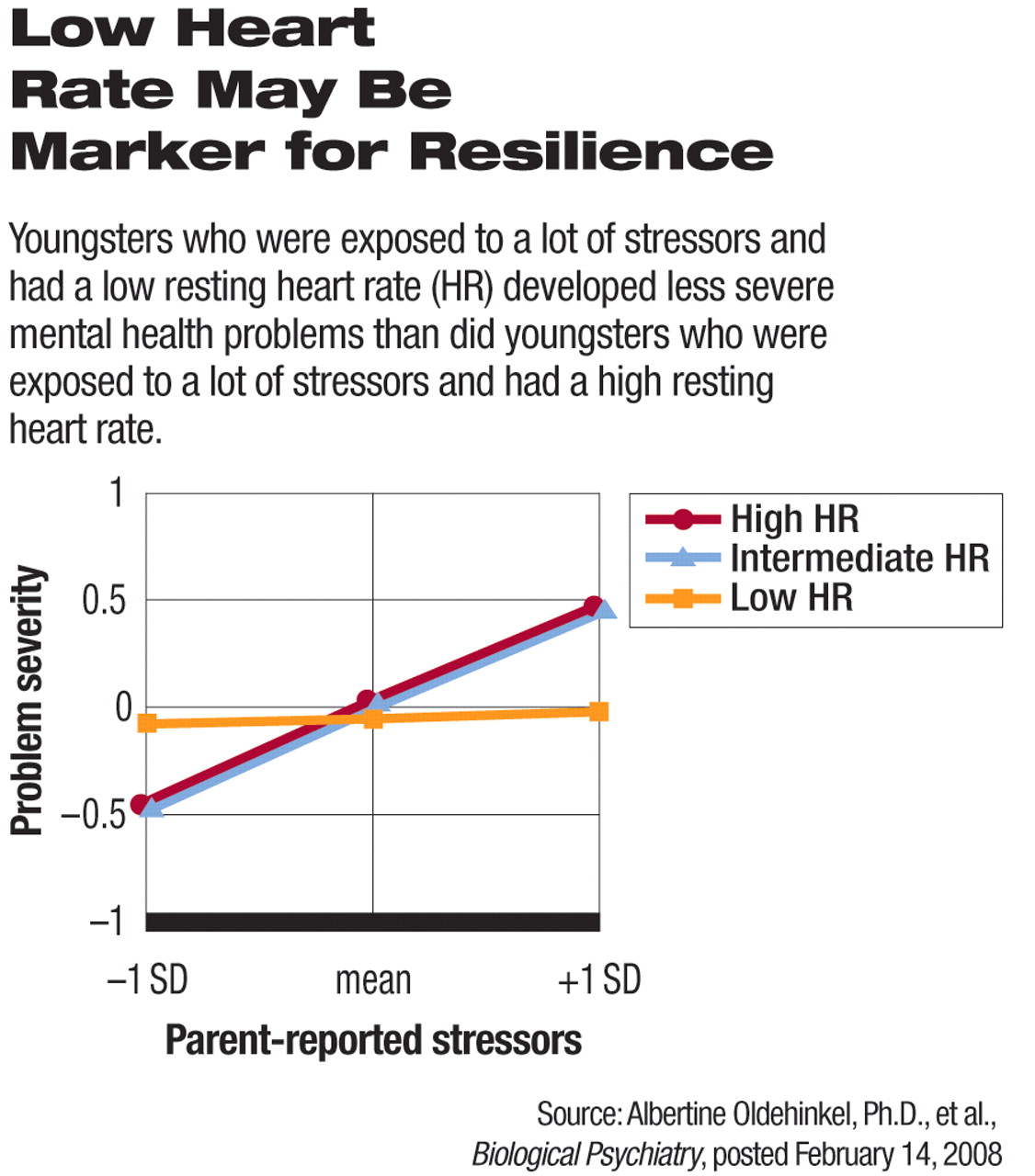Adolescents who have low resting heart rates are less vulnerable to stress-provoked mental health problems than are adolescents with higher resting heart rates.
The finding comes from Albertine Oldehinkel, Ph.D., a professor of psychiatric epidemiology at the University Medical Center Groningen in the Netherlands, and her coworkers. Results were posted online in Biological Psychiatry on February 14.
Oldehinkel and her team measured the resting heart rates of nearly 1,500 11-year-olds, and assessed them for internalizing mental health problems such as anxiety, depression, and somatic complaints and for externalizing problems such as aggression and rule-breaking behaviors.
When the youngsters were age 14, the researchers again evaluated them for these mental health problems. Also, at that time, the subjects' parents were asked to rate how stressful their children's lives had been during the previous two years and whether their children had experienced various adverse situations during the previous two years, such as chronic illness, a lot of pressure at school, financial problems, lack of friends, or bullying. Finally the researchers looked for links between the youngsters' resting heart rates at age 11, their stressor scores, and their mental health outcomes at age 14.
The researchers found that high stressor scores predicted more severe mental health problems in adolescents with intermediate or high heart rates than in adolescents with low heart rates. The difference was statistically significant.
Furthermore, these findings remained significant even when the subjects' mental health problems at the start of the study were considered and when internalizing or externalizing mental health problems were considered. And although boys had more externalizing problems than girls did, findings were not significantly different for boys and girls.
Thus the study indicates that “low heart rate is a marker of resilience to the effects of environmental challenges in early adolescence,” Oldehinkel and her colleagues concluded.
A question now, however, is why, they wrote.
A low-resting heart rate undoubtedly reflects an underaroused involuntary nervous system in the face of stress. But why is the involuntary nervous system underaroused in such conditions? Is it due to the brain's major response center to threatening stimuli—the amygdala—keeping“ its cool” in the throes of stress? Is it due to the adrenal glands putting out less stress hormone in the throes of stress? As Oldehinkel told Psychiatric News, “One of the things we will now examine is how low resting heart rate is related to various psychophysiological stress responses.”
Still another question that needs to be answered, they indicated, is this: if a low resting heart rate indeed helps buffer youngsters against externalizing mental health problems, how come other investigators have found a low resting heart rate in antisocial youngsters? After all, antisocial behaviors are externalizing mental health problems. Oldehinkel and her team admit that they currently have no answer to this seeming paradox. However, they suspect that the answer might lie in the amygdala.
“Damage to the amygdala has been found to prevent danger stimuli from eliciting arousal and distress, but also to increase the probability of proactive aggression in nonthreatening circumstances. An underactive amygdala could hence underlie both reactive and proactive behaviors.”
Still another challenge, the researchers pointed out, “will be to investigate whether interventions to lower heart rate help increase stress resilience.”
The study was funded by the Netherlands Organization for Scientific Research and the Department of Justice, Scientific Research, and Documentation Center.
An abstract of “Low Heart Rate: A Marker of Stress Resilience. The TRAILS Study” can be accessed at<www.journals.elsevierhealth.com/periodicals/bps> under “Articles in Press.” ▪

